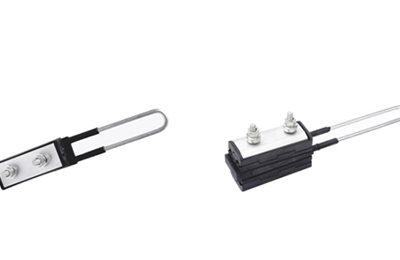Cable terminal lugs, also known as cable lugs or cable connectors, are crucial components in electrical systems. They are designed to establish a secure and reliable connection between electrical cables and other electrical devices, such as switches, circuit breakers, or other conductors.

Mechanical Connection Principle
The primary function of cable terminal lugs is to create a firm mechanical connection. They are typically made of conductive materials like copper or aluminum, which have good malleability. When installing the terminal lug onto a cable, the conductor of the cable is inserted into the barrel - shaped end of the lug. Then, through methods such as crimping or bolting, the lug is tightly fastened around the cable conductor.
Crimping
Crimping is a common method. A crimping tool is used to compress the barrel of the lug around the cable conductor. This process deforms the lug material, creating a tight fit around the conductor. The crimping force ensures that the cable and the lug are firmly held together, preventing any relative movement between them. This mechanical bond is essential as it can withstand the mechanical stress that may occur during the operation of the electrical system, such as vibrations or pulling forces on the cable.
Bolting
In some cases, especially for larger - sized cables or applications where a more adjustable connection is required, bolting is used. The cable conductor is inserted into the lug, and then a bolt is tightened through holes in the lug and the conductor (if applicable). The bolt exerts pressure, clamping the conductor within the lug. This method provides a secure connection that can be easily disassembled for maintenance or modification purposes.
Electrical Conductivity Principle
Beyond the mechanical connection, cable terminal lugs are designed to ensure efficient electrical conductivity. Since they are made of highly conductive materials, they serve as a bridge for the flow of electric current between the cable and the connected device.
When an electric current passes through the cable, it smoothly transitions into the terminal lug and then to the connected electrical component. The low - resistance nature of the lug materials, such as copper with its excellent electrical conductivity, minimizes the power loss during this current transfer. This is crucial for maintaining the efficiency of the electrical system. For example, in a power distribution network, if the terminal lugs have high resistance, a significant amount of electrical energy would be wasted in the form of heat, reducing the overall power delivery to the end - users.
Moreover, the tight mechanical connection established by crimping or bolting also contributes to good electrical conductivity. A loose connection would create air gaps or high - resistance interfaces, which can lead to arcing, overheating, and ultimately, connection failures. By ensuring a firm and continuous contact between the cable and the lug, the electrical current can flow smoothly, guaranteeing the reliable operation of the electrical system.
In summary, cable terminal lugs work by combining a strong mechanical connection method with excellent electrical conductivity properties. Their proper use and installation are essential for the safe and efficient operation of various electrical systems, from small - scale residential wiring to large - scale industrial and power distribution networks.
GET A QUOTE